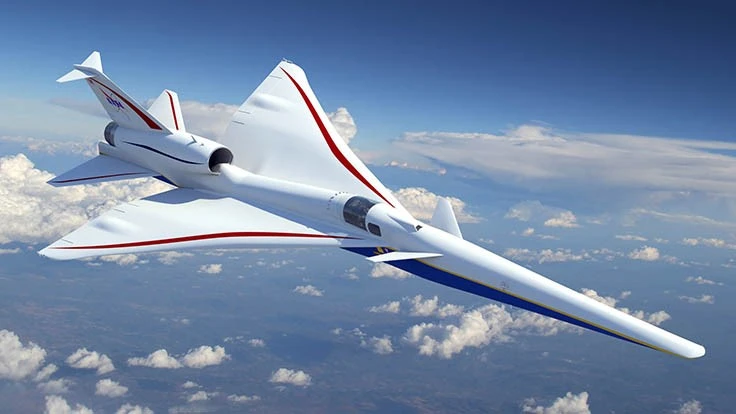
NASA has awarded Lockheed Martin a contract to design, build, and flight test the Low-Boom Flight Demonstrator, an X-plane designed to make supersonic passenger air travel a reality.
Lockheed Martin Aeronautics Co. of Palmdale, California, was selected for the Low-Boom Flight Demonstration contract, a cost-plus-incentive-fee contract valued at $247.5 million. Work under the contract began April 2, 2018 and runs through Dec. 31, 2021.
Under this contract, Lockheed Martin will complete the design and fabrication of an experimental aircraft which will cruise at 55,000ft at a speed of about 940mph and create a sound about as loud as a car door closing, 75 Perceived Level decibel (PLdB), instead of a sonic boom.
The aircraft will be built at the Lockheed Martin Skunk Works facility in Palmdale, California, and will conduct its first flight in 2021.
Once NASA accepts the aircraft from the contractor in late 2021, the agency will perform additional flight tests to prove the quiet supersonic technology works as designed, aircraft performance is robust, and it’s safe to operate in the National Airspace System.
Beginning in mid-2022, NASA will fly the X-plane over select U.S. cities and collect data about community responses to the flights. This data set will be provided to U.S. and international regulators for their use in considering new sound-based rules regarding supersonic flight over land, which could enable new commercial cargo and passenger markets in faster-than-sound air travel.
"It is super exciting to be back designing and flying X-planes at this scale," said Jaiwon Shin, NASA's associate administrator for aeronautics. "Our long tradition of solving the technical barriers of supersonic flight to benefit everyone continues."
Lockheed Martin Skunk Works will build a full-scale experimental aircraft, known as an X-plane, of its preliminary design developed under NASA's Quiet Supersonic Technology (QueSST)effort. The X-plane will help NASA establish an acceptable commercial supersonic noise standard to overturn current regulations banning commercial supersonic travel over land.
"We're honored to continue our partnership with NASA to enable a new generation of supersonic travel," said Peter Iosifidis, Low-Boom Flight Demonstrator program manager, Lockheed Martin Skunk Works. "We look forward to applying the extensive work completed under QueSST to the design, build, and flight test of the X-plane, providing NASA with a demonstrator to make supersonic commercial travel possible for passengers around the globe."
Lockheed Martin Skunk Works and NASA have partnered for more than a decade to enable the next generation of commercial supersonic aircraft. NASA awarded Lockheed Martin Skunk Works a contract in February 2016 for the preliminary design of the supersonic X-plane flight demonstrator.
Latest from Aerospace Manufacturing and Design
- AIX showcases the future of air travel
- Sunnen Products' PGE-6000 gage
- #41 Lunch + Learn Podcast - SMW Autoblok
- Revolutionizing aircraft design without sacrificing sustainability
- GE Aerospace awarded subcontract for FLRAA next phase
- KYOCERA Precision Tools publishes 2025-2026 Indexable Cutting Tools Catalog
- BOC Aviation orders 120 Airbus, Boeing jetliners
- Mazak’s INTEGREX j-Series NEO






